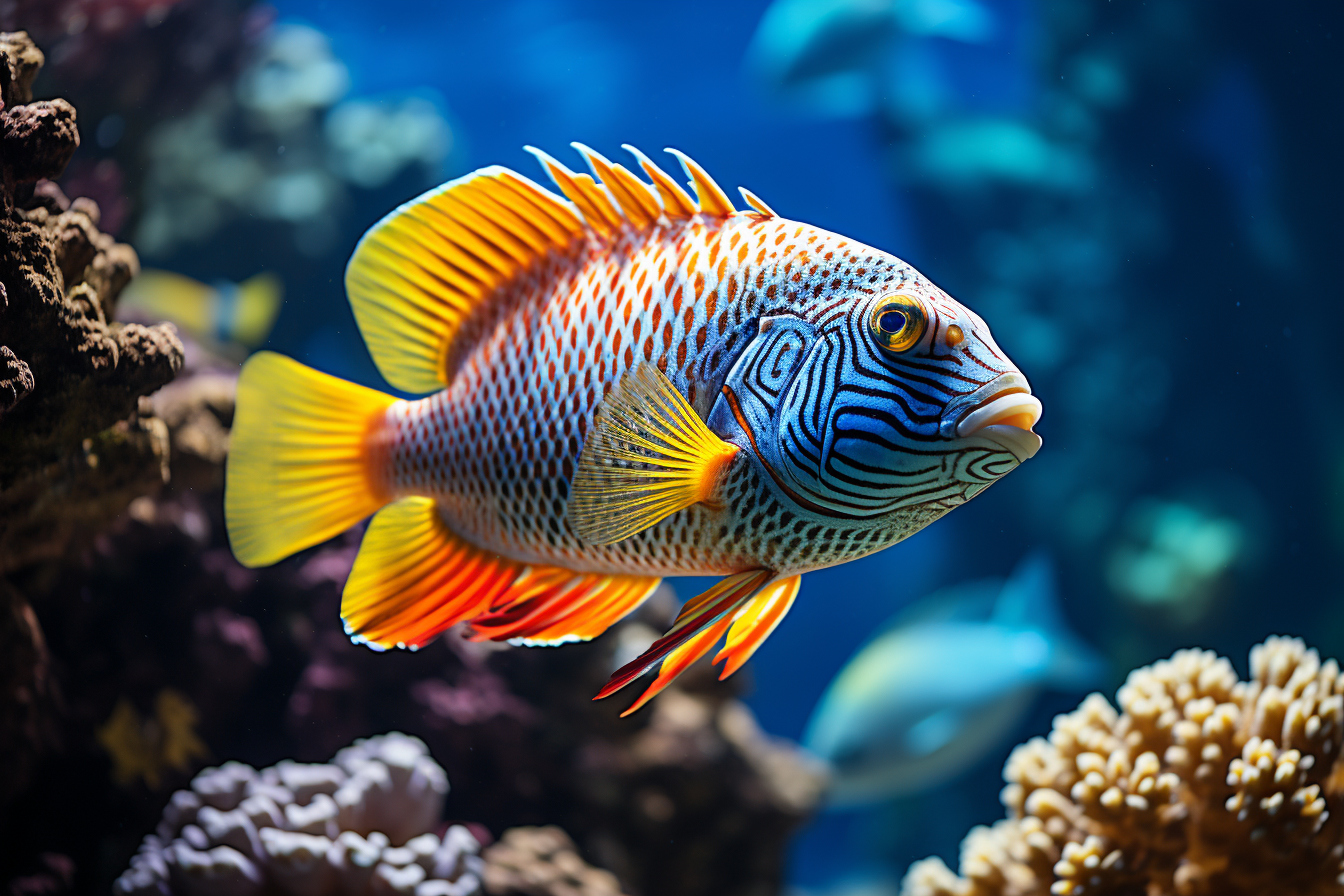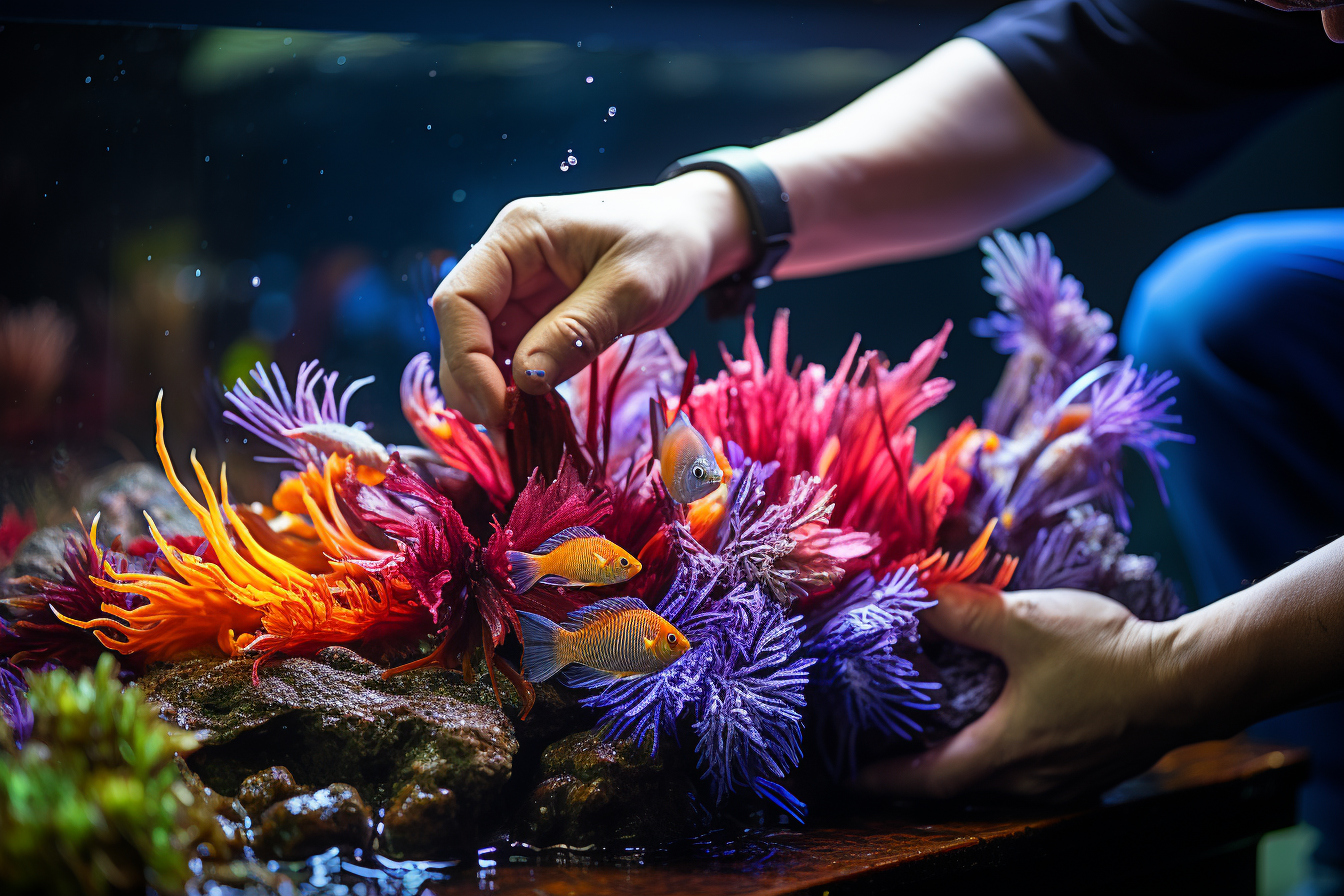Seawater aquariums have always fascinated fish and marine life enthusiasts. The beauty and diversity of marine species make these aquariums a true living masterpiece in our homes. However, before embarking on the adventure, it is essential to know the key elements for choosing and maintaining such an aquarium.

Choosing the right equipment
The first step to a successful saltwater aquarium is to choose the right equipment. For this, it is essential to take into account several criteria. First of all, the size of the aquarium is decisive. The larger the aquarium, the easier it will be to maintain a stable chemical balance. Next, make sure you have a quality filtration system that will keep the water clean and healthy for your fish and corals. Also consider investing in a lighting system adapted to the specific needs of the marine species you wish to maintain.
Choosing the right species
Once you have chosen your equipment, it is time to consider the choice of species. It is crucial to select fish and corals that are compatible with each other to avoid conflicts and health problems. Learn about the characteristics of each species, their diet, their behavior and their water quality needs. Do not hesitate to seek advice from specialists or join forums dedicated to marine aquariums to obtain informed recommendations.
The importance of chemical balance
In a saltwater aquarium, chemical balance is essential. It is therefore essential to regularly monitor water parameters such as temperature, pH, salinity and nitrite and nitrate levels. To keep these parameters stable, you will need to perform regular water changes and use quality products to correct any imbalances. Also be careful not to overcrowd your aquarium, as this can lead to increased water pollution.
The importance of regular maintenance
A saltwater aquarium requires regular maintenance to ensure the health and well-being of its inhabitants. It is recommended to clean the walls of the aquarium regularly to remove algae and residue. Also be sure to maintain your filtration system by cleaning the foam, replacing the filter media and checking that the pump is functioning properly. Finally, remember to check the water parameters regularly and make any necessary adjustments.
Integrate marine biology for an optimal experience
Beyond the material and technical aspect of seawater aquariums, understanding marine biology plays a fundamental role for an enriching aquarium experience. This dimension often overlooked by beginners can transform a simple hobby into a deep and educational passion.
The ecosystem of a saltwater aquarium is a micro-representation of the vast oceans of our planet. Each marine species, whether fish, coral or invertebrates, has evolved over millennia and plays a specific role in its natural environment. By understanding these interactions, aquarium hobbyists can recreate a more natural and balanced habitat for their occupants.
For example, some fish, like gobies or blennies, are excellent sand cleaners, helping to prevent the buildup of organic waste on the bottom of the aquarium. Introducing these species can not only add diversity and beauty to your aquarium, but also actively participate in its maintenance.
Likewise, corals, although primarily filter-feeding animals, can also interact significantly with other species. Some fish, such as clownfish, form symbioses with anemones or certain corals, providing mutual protection against predators and parasites.
Finally, setting up a “refugium”, a small area isolated from the main aquarium, can allow you to cultivate small algae and micro-organisms which will serve as food for your fish and contribute to the general balance of the fish. ‘aquarium.
Discover the therapeutic benefits of marine aquariums
It is undeniable that contemplating a seawater aquarium has a calming effect. But did you know that this experience goes far beyond simple relaxation? Various studies have shown that spending time observing an aquarium can have real benefits for mental and physical health.
When we immerse ourselves in contemplation of the harmonious movements of fish and the delicate dance of corals, our heart rate decreases and our blood pressure improves. This reaction is similar to the feeling of well-being you get from listening to calming music or meditating.
On the other hand, marine aquariums can also be beneficial for people suffering from attention deficit disorder or hyperactivity. The concentration required to observe the details and interactions of species in a marine environment helps focus attention, providing a welcome break from an often overloaded mind.
Additionally, the responsibility of maintaining an aquatic ecosystem builds a sense of responsibility and patience. Caring for fish and corals, understanding their needs, and constantly learning for their well-being can provide a source of pride and accomplishment.
It is also worth noting that some medical facilities have incorporated seawater aquariums into their spaces, recognizing their therapeutic potential. Hospitals and nursing homes, for example, often use aquariums to reduce patient stress and improve their overall experience.
The symbiosis between corals and clownfish
When discussing the wonders of a saltwater aquarium, it’s impossible to ignore the remarkable association between clownfish and certain corals. This relationship is one of the most iconic examples of symbiosis in the underwater world. But what makes this union so special and how can it enrich an aquarist’s experience?
Clownfish, with their bright colors and graceful movements, are often the stars of marine aquariums. Native to the tropical waters of the Pacific and the Indian Ocean, they have a fascinating characteristic: they live in close relationship with certain sea anemones or corals. This relationship, called mutualism, benefits both the fish and the anemone.
The anemone, with its stinging tentacles, offers protection to the clownfish against predators. In exchange, the clownfish brings food to the anemone, through the waste it produces or sometimes even through the food it captures. In addition, the movements of the fish promote the circulation of water around the anemone, providing it with the necessary oxygen.
But how does the clownfish avoid the stings of the anemone’s stinging tentacles? This is thanks to a thin layer of mucus that covers its skin. This mucus protects the fish from the anemone’s toxins. However, this protection is not innate. Young clownfish must gradually acclimatize to their host anemone, by gently touching its tentacles with different parts of their body until they are completely immune.
For an aquarist, integrating this fascinating dynamic into their saltwater aquarium brings an extra dimension to the experience. Not only does this provide an incredible visual spectacle, but it also provides a better understanding of the complex interactions that occur in coral reefs. By reproducing this delicate balance, the aquarist not only observes a beautiful aquarium, but becomes the privileged witness of an evolutionary dance that has been taking place for millions of years. It’s a living lesson in how life in the oceans adapt, collaborate and thrive.












